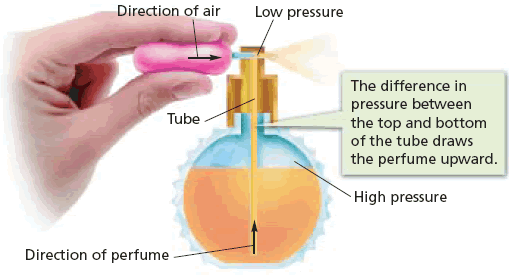

The pressure drop across the pipe is 2.7*10 3 Pa. This result shows that the decrease in pressure in the Venturi is proportional to the square of the velocity, and the ratio of the cross sectional areas at the entrance and at the middle.ģ) Water flows through a pipe that has a diameter of 4 cm at the entrance and 2 cm at the exit. It is used in carburetors: the decreased pressure achieved in the center of the device sucks fuel into the air flux, so that a good mix can be achieved before directing it to the combustion chamber inside the engine bloc.Ĭalculate what is the relationship between pressure and velocity at the interior of the Venturi tube.Īssuming that the venturi tube is horizontal, so h = 0 and : It is a tube that consists of two conical parts with a short portion of uniform cross-section in between, so that the in this short portion of smaller area the liquid is squeezed increasing its velocity. V 1= 0 An approximation is made here, which is, the liquid at the top doesn't move.In fact it actually moves very slowly).Ī 2 = 0 which is the area of the hole at the bottom (because it is much smaller than the area of the tank). This is a classical example of conservation of energy by conversion of potential energy (of the liquid at the top of the tank) into kinetic energy (liquid leaving the tank at a speed).įirstly, P 1 = P 2 (which is atmospheric pressure) The continuity equation is very fundamental and it occurs in various branches of physics, including quantum mechanics and electromagnetism.ġ) Calculate the speed of liquid flowing out a tank (containing liquid to a depth of 1 m) through a small hole at the bottom (in the case of gases it may be more complicate because the density may change as it flows). The flow is given by A*v so that the continuity equation for the flow of liquids is: That is because no liquid can disappear on its way. Considering the flow of liquids through pipes of varying cross sections (A), the mass flow must conserve. This high speed obtained is converted into pressure by a diffuser, and velocity is reduced.Īnother equation is usually needed to solve problems involving fluids: the continuity equation. For instance, centrifugal pumps (and compressors) increase the speed of the fluid. The Bernoulli Equation accounts for the trade off between velocity and pressure, which is a crucial engineering issue. The difference is that instead of mass the Bernoulli Equation uses the density (of the fluid considered). Notice the terms for potential and kinetic energies of the fluid.

It is basically a statement of the principle of conservation of energy for fluids. The Venturi effect (Bernoulli effect) refers to the decrease in pressure in flowing gases or liquids with increasing flow velocity. It may also represent the flux of air around aircraft wings ( ). The left side, with subscript 1, represents the fluid before and the right side, subscript 2, represents after some transformation in the flow parameters.Ī typical example of such process is the passage of a fluid trough a pipe where the inlet and outlet have different areas and/or heights. This equation describes the behaviour of fluids.


 0 kommentar(er)
0 kommentar(er)
